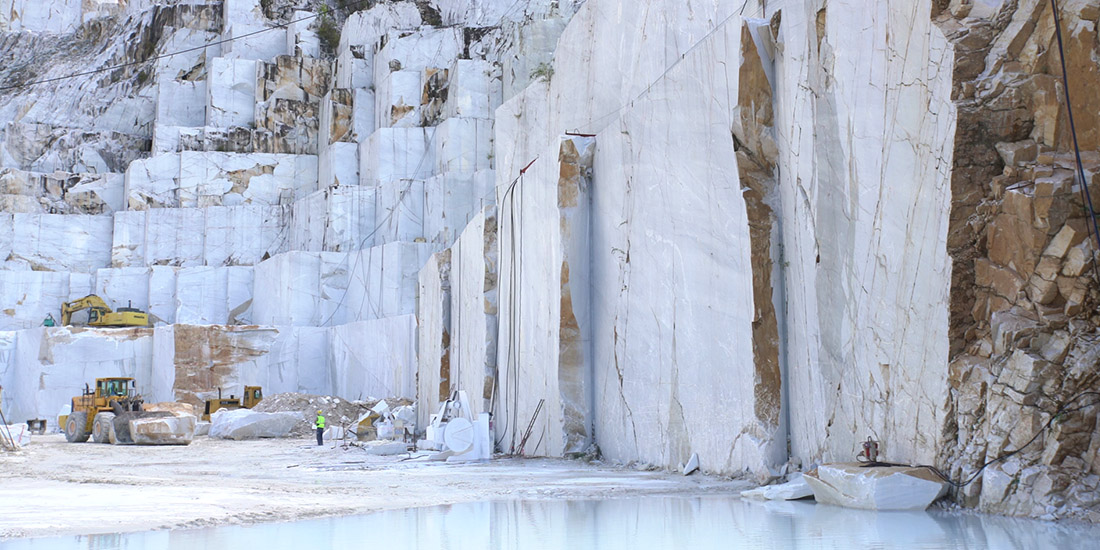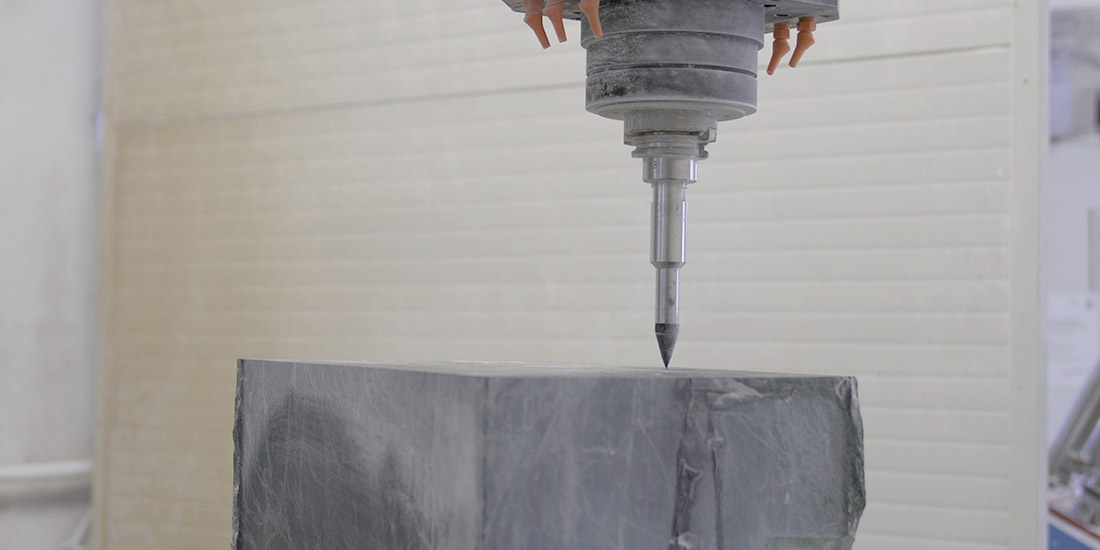
HELIN
Helin investigates new perspectives towards the relationship of an individual artistic intention in respect to the collective nature of human expressions. By blending the concepts of human, nature and technology, the project seeks to discuss a holistic concept of natural phenomena. If an aesthetic object is created without any human leitmotif or purpose, do we witness an accidental product of nature or do we perceive new forms of artificial intentions? The resulting sculpture, Helin, opens questions whether art can be considered natural if it occurs in the absence of individual intent.
Project
According to Immanuel Kant, nature follows no purpose but only creates the illusion of “Zweck”. In contrast to this natural phenomenon, art is initiated by a human purpose to shape a finite artefact. Using intelligent yet highly autonomous technology, Helin eliminates this human desire from the process of creation to witness the oxymoron of using technology to perceive natural art. The artwork enables insights into historical, spatial data of human expressions and translates assembled intelligence into a natural and tangible artefact of heavy dark marble. This material is a central element of the artwork, as it renders a physical snapshot of an endless series of exchanged information into space.
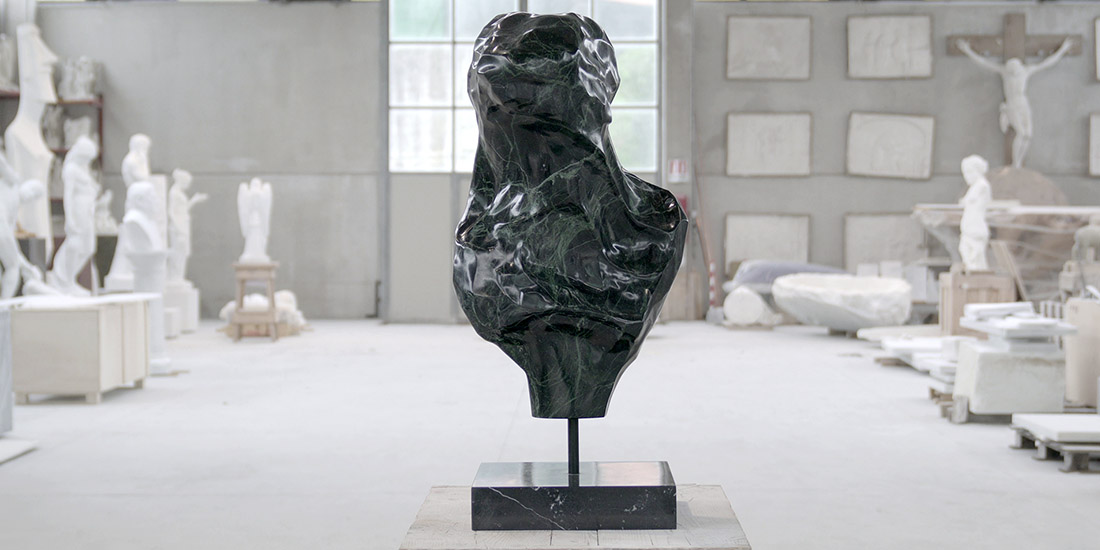
Technology
The overall technical approach for the project is based upon a novel procedure for Deep Learning in 3D space. The corresponding custom network architecture is trained on publicly available 3D shapes related to historical busts. To remove bias from the dataset and establish a universal view towards human expression, the process of producing Helin included material across all accessible epochs and cultures from online sources such as scan the world. The original source material consists of nearly 10.000 individual shapes. In the process, each sculpture is re-oriented to face the z-axis, re-meshed to create a uniform topology and normalized in 3-dimensional space. Furthermore, different 3D noise functions and subdivisions were used to create new arrangements and permutations of the original historical busts. After a process of 3 months the dataset had been extended to a total of 120.000 sculptures and the network for the artwork Helin could be trained. To explore the final generated latent space of a collective historical art, Studio Christian Mio Loclair wrote a custom pipeline offering real-time control and feedback 25 times a second.
Hence, Helin embodies an organic data mirror emerging from collective historical heritage. A custom Deep Learning approach to train three dimensional shapes was developed at Studio Christian Mio Loclair and ranges across a diverse set of digital tools for advanced spatial reconstruction. A 10-month research phase based upon classical Generative Adversarial Networks resulted in a new concept to compress three-dimensional data into lower dimensional containers. Consequently, the load of neural networks can be heavily reduced and spatial artefacts can be explored in Real Time. This corresponding method is called RayGAN. The overall production pipeline includes consumer tools such as HoudinI and c4d. However, the core of the approach lies in a set of advanced custom procedures and algorithms written in C-sharp, Python and GPU shader languages such as DX11 and GLSL.
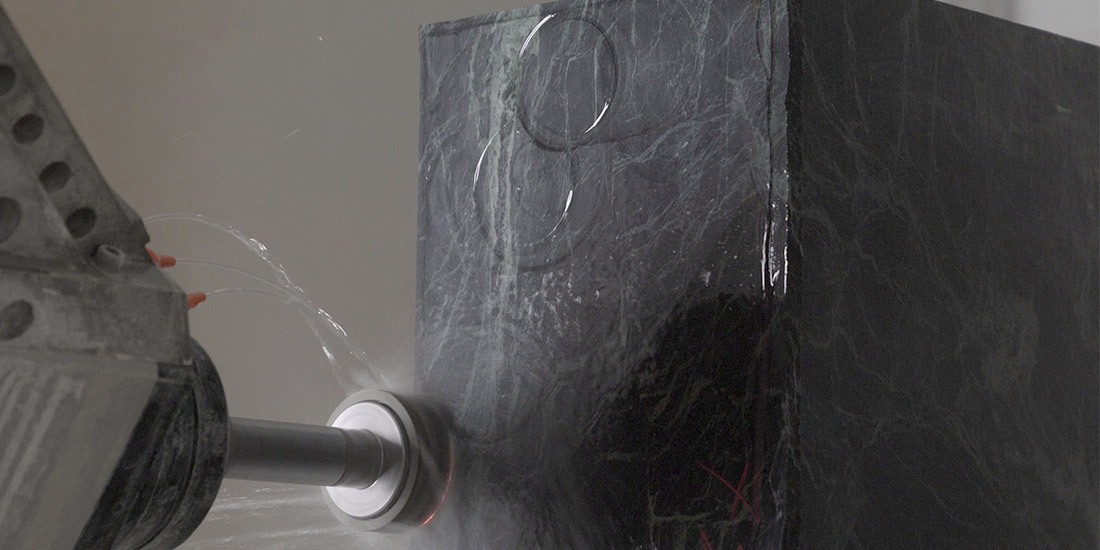
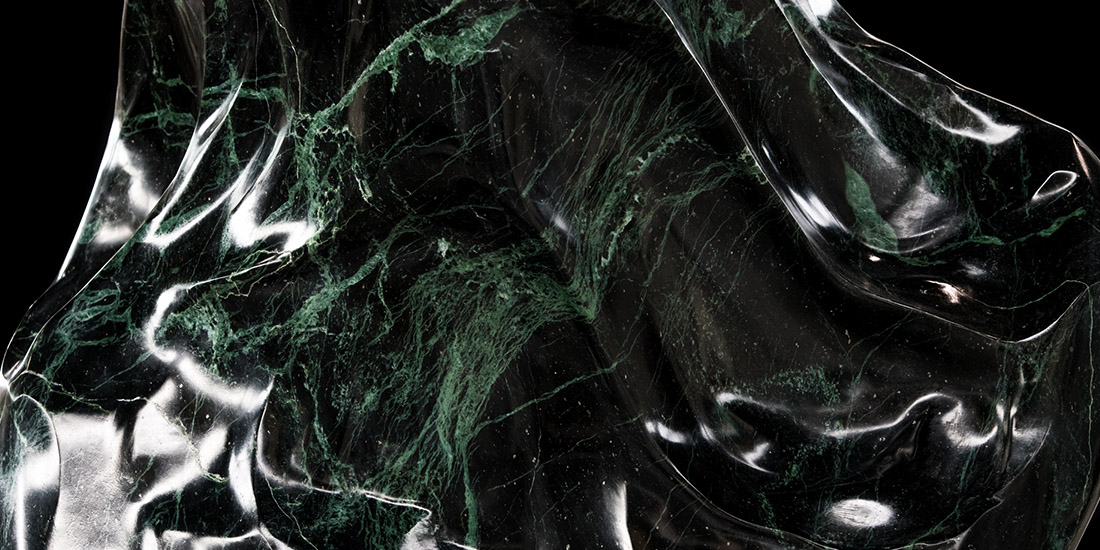

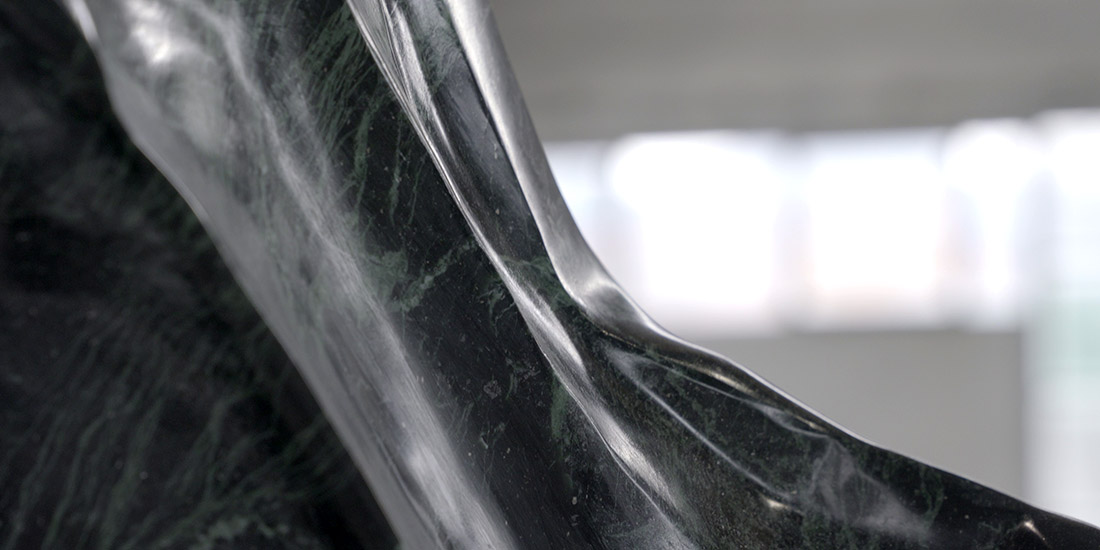
COLLABORATORS
Art Direction: Christian Mio Loclair
AI Artist: Meredith Thomas
Generative Design: Helin Ulas
Production Management: Celia Bugniot
Management: Thomas Johann Lorenz
Camera: Marco Petracci
Photo: Marco Petracci
Video Production: Ali Naddafi
Sound Composition: Christian Losert
Robot Operations: Tor Art
